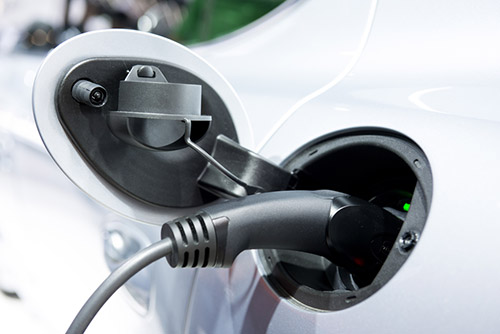December 9, 2014 – Today’s guest blogger is Heidi Cardenas. Her background may be human resources, business administration, technical writing and corporate communications, but her interests include the latest advances in consumer technology. She is big on business advice and home improvement and enjoys researching and writing blog posts, articles, white papers, and case studies. In tackling hybrid vehicle technology she has embraced a moving target. Recently I wrote about aluminum-air and zinc-air batteries. But before we see a transition to vehicles with these technologies Heidi describes where we are today and where we are going in the immediate future.
Hybrid vehicles were originally developed to use less fuel and lower vehicle emissions. However, they have some disadvantages: they cost more, weigh more, have a limited charging infrastructure and have a lower electric-only operating range in cold temperatures. The battery size and weight, in particular, has been a problem. Fortunately, automakers have allies at universities and government think tanks who are developing new battery technology. USA Today senior auto writer James R. Healey predicts that within 10 years or so, the vehicles on American streets will be very different from today’s cars.
Types of Hybrids
Early hybrids were very expensive and available only to a small percentage of new car buyers. Now, they’re a common option in dealerships and discussed regularly on social media such as on DriveTime’s Facebook page.
Alternative fuel vehicles include electric vehicles (EVs), hybrid electric vehicles (HEVs), plug-in hybrid electric vehicles (PHEVs) and micro-hybrids (also called stop-start vehicles). EVs run on electric motors and use charging stations and regenerative braking systems to power their batteries. HEVs run on gasoline-powered engines with an electric motor as a complementary power source. PHEVs run on battery-powered electric motors with gasoline engines as a complementary power source and plug into charging stations to charge their batteries. Micro-hybrids have combustion engines with regenerative braking technology that cuts the flow of gas to the engine when the vehicle stops.
Advances in Hybrid Technology
Hybrid technology is evolving and much of the advances are in the form of battery improvements, reports Popular Mechanics. Massachusetts Institute of Technology, Colorado State University, and Stanford are all working on different battery prototypes, but it looks like the future of EV batteries will come out of IBM in the form of air cathode energy storage.
The greatest problem with all electric cars is the cyclic issue of battery weight. To move the mass of the car, you need the energy from the battery. To deliver that quantity of energy, you need a bigger battery that increases the mass of the car. Traditional batteries are heavy because they are filled with metal and liquid; however, the new metal-air design removes the liquids and decreases the distance between the anode and cathode. This makes the battery weigh less and increases the energy output by an order of magnitude.
What Technology Changes Are Coming?
USA Today describes the future streetscape as having more EVs and hybrids, far fewer gas-powered vehicles and smaller vehicles with oval bodies and better aerodynamics. Where engineers are working on the energy to weight ratios, businesspeople are looking for the balance between the green of technology and the green of the dollar. Ray LaHood, United States Secretary of Transportation from 2009 to 2013, expects new technologies to cost more but also to be offset by fuel savings over the lifetime of the vehicle.
To support the growth of hybrid technology, an infrastructure needs to be developed. For short trips, AC Level 1 or Level 2 charging is sufficient. In essence, this form of charging allows you to plug your car into a home electrical socket, but it is slow, adding between 2 and 20 miles per hour of charge. Longer trips require intermediate charging stations that deliver a fast charge, usually less than 20 minutes for a full charge. Many states have already set up incentives for businesses that implement electric charging stations at job sites. Google, Apple, Netflix, and Ikea are just a few of the big names that are getting onboard the EV technology trend.
Unanticipated Market Forces
What can delay the move from gasoline and diesel-powered vehicles to hybrids and EVs? Market forces surrounding the price of fossil fuel. In the last couple of months we have seen this happening in world markets as oil pricing and therefore the price of gasoline and diesel have dropped well below past pricing highs. Suddenly a public looking at plug-in and hybrid technology is once more considering traditional powered vehicles.
Is this a long-term trend and could it end our great experiment with hybrids and EVs? Conceivably if oil prices remain depressed. But more than likely this is a temporary blip and those manufacturers like Tesla who are fully committed to ending dependence on fossil fuel energy for motor transport will continue to make vehicles that will be less expensive, lighter in weight, and provide competitive value for buyers.












[…] Battery improvements, weight reduction, and extended performance will make hybrid and EVs the predominant vehicles on roads by 2025. […]